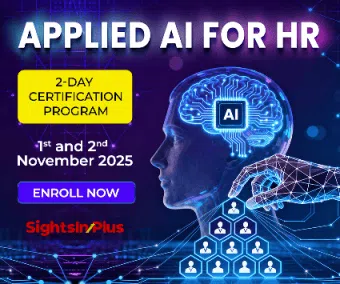Organizational hierarchies play a crucial role in shaping employee experiences. How these structures are designed can significantly affect employee turnover rates and job satisfaction.
When employees feel stifled by rigid hierarchies, they are more likely to disengage and eventually leave the organization. But what if leadership could be reimagined to address these issues?
Recent research has shown that traditional hierarchies, where decisions are made only at the top, can lead to frustration and disengagement among employees.
A 2023 study from MIT Sloan Management Review found that such structures can slow down innovation and limit employees’ ability to make decisions on their own. When employees feel their ideas are not being heard or their roles are too restricted, they often become frustrated.
This frustration can build over time, leading to higher turnover as employees seek opportunities where they feel more valued and empowered.
Adding to this, a 2024 study by the Society for Human Resource Management (SHRM) highlighted that employees in strict hierarchical environments often feel disconnected from leadership.
This sense of disconnection can make employees feel undervalued, further increasing the likelihood of them leaving the organisation.
When employees feel that their contributions are not recognized and their potential is not being utilized, they may look for new roles where they can find a stronger sense of purpose and connection.
To tackle these challenges, organisations need to rethink their approach to leadership and hierarchy. One effective way to do this is by moving towards more flexible and decentralised models.
In a decentralised structure, decision-making is shared across various levels of the organisation rather than being concentrated at the top.
This approach empowers employees, giving them a sense of ownership and involvement in the company’s direction. When employees feel they have a say in important decisions, they are more likely to stay engaged and satisfied in their roles.
Another important aspect is fostering open communication across all levels of the organisation. When employees feel they can share their thoughts and ideas freely, without fear of being ignored or reprimanded, they are more likely to feel connected to their work and the organisation as a whole.
This open communication helps to bridge the gap between leadership and staff, making everyone feel like they are part of the same team.
Moreover, encouraging collaboration instead of competition among employees can further enhance job satisfaction. In a collaborative environment, team members work together towards common goals and celebrate shared successes.
This not only drives innovation but also builds a sense of community within the organisation. When employees feel supported by their colleagues and are part of a team working towards a common purpose, they are less likely to leave the organisation.
In conclusion, traditional hierarchical structures can significantly impact employee turnover by creating environments where employees feel stifled, disconnected, and undervalued.
However, by reimagining leadership through more flexible and decentralised models, organisations can empower their employees, foster open communication, and create a collaborative culture.
These changes not only reduce turnover but also lead to higher job satisfaction and sustained growth, ultimately building a more dynamic and successful organisation.
Note: We are also on WhatsApp, LinkedIn, Google News, and YouTube, to get the latest news updates, Subscribe to our Channels. WhatsApp– Click Here, Google News– Click Here, YouTube – Click Here, and LinkedIn– Click Here.



